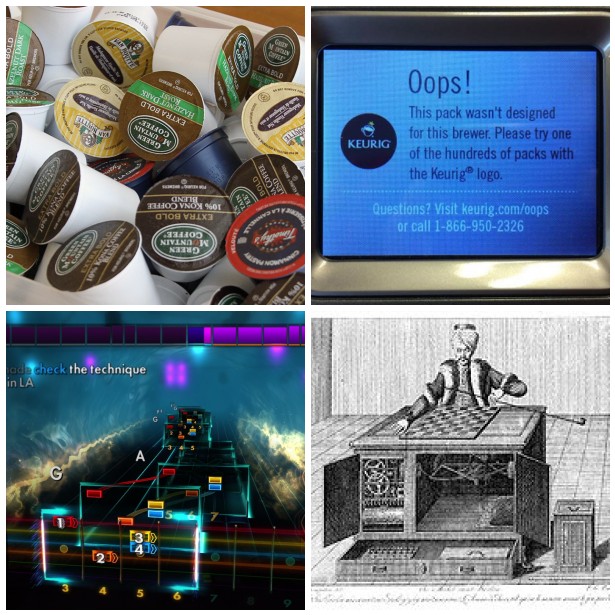Sperm Play Games with Keurig's DRM

Dr Dawn Motyka joins the Geeks for fascinating, apparently unpronounceable stuff about the effect of cell phones on your body, gamification, and how Amazon’s mechanical Turk is helping speed up the Singularity.
Gamification
Using the power of games to learn
Examples:
- 4square
- Stack Overflow
Horrible Examples:
- Ribbon Hero – video game to learn Microsoft Office 2007 Ribbon interface
Great Examples:
- Rocksmith – Guitar
- DuoLingo – Language
- SuperBetter – Health
- Zombies, Run! – Excercise
Coffee and DRM don't mix
Coffee company Keurig Green Mountain offered something of a mea culpa on Wednesday night, when its CEO admitted that the company had been wrong to build its second-generation coffee makers with tech that prevented users from brewing their own coffee independent of Keurig’s licensing. Keurig Green Mountain stock is currently
MIT research on machine-learning
Last December, at the Annual Conference on Neural Information Processing Systems, MIT researchers announced the compilation of the world
Appeals Court: NSA-backed mass surveillance illegal under Patriot Act | ExtremeTech
The US Court of Appeals for the Second Circuit has released a bombshell legal ruling that could have a significant impact on how the NSA is allowed to conduct surveillance of American citizens. According to the 2nd Circuit, the NSA
Web Extra: Edison's Talking Dolls Can Now Provide The Soundtrack To Your Nightmares
Back in 1890, Thomas Edison gave us some of the world’s first talking dolls. Today, the glassy-eyed cherubs that are still around stand about 2 feet tall; they have wooden limbs and a metal body; and they sound supercreepy. (If you’re looking for a soundtrack to your nightmares, listen to the audio story above.) Edison built and sold about 500 of them back in 1890. Now, new technology has made hearing them possible for the first time in decades.

